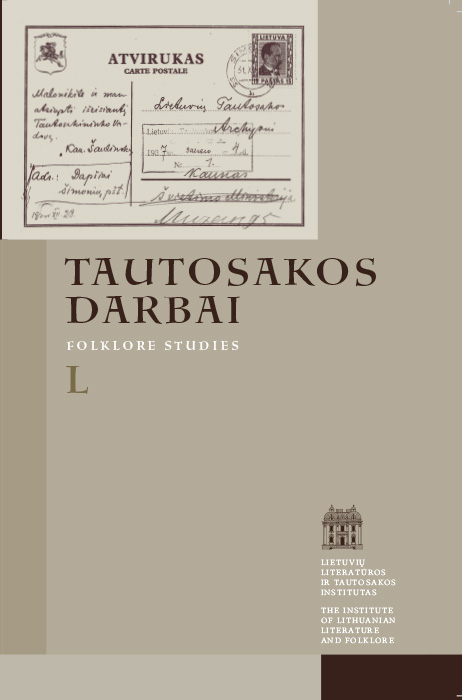Tykus vanduo: įvaizdžio simbolika lietuvių ir slavų paremijose
Santrauka
Straipsnyje gilinamasi į tykaus vandens įvaizdžio kilmę ir sklaidą, semantiką, skirtingų konotacijų raidą. Struktūrinės-semantinės analizės metodu tiriamos patarlės (lietuvių, lenkų, rusų, lotynų kalbomis), priklausančios antikos laikus siekiančiam globaliam tipui. Antroje straipsnio dalyje nagrinėjami du tekstai, kaip spėjama, atstovaujantys archajiškai poetinei sintaksinio paralelizmo struktūrai, kurioje [tykus] vanduo gretinamas su [žema] žole; tai XX a. pradžioje užrašytas lietuvių užkalbėjimas ir populiarus, iki šiol vartojamas rusų priežodis. Apibrėžiant tiriamojo įvaizdžio simboliką, stengtasi išryškinti skirtumus lietuvių ir rusų (slavų) kalbose bei nustatyti tiems skirtumams įtakos turėjusias raidos aplinkybes.
Atsisiuntimai
Nėra atsisiuntimų.
Skaitomiausi šio autoriaus(ų) straipsniai
- Giedrė Bufienė, Vaikystės patarlės: XX a. tarptautiniai vaikų kalbos ir mąstymo tyrimai , Tautosakos darbai: T 51 (2016)
- Giedrė Bufienė, Patarlių šalies riteris , Tautosakos darbai: T 47 (2014)
- Giedrė Bufienė, Bičiulių dovana Arvo Krikmannui , Tautosakos darbai: T 48 (2014)
